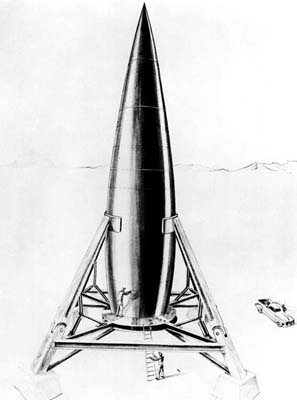 |
The 1946 RAND World-Circling Spaceship on launch pad click to enlarge
NASA |
The RAND World-Circling Spaceship
and the 1948 Chiles-Whitted "rocketship" sighting
In May, 1945, when hostilities had barely ended in Europe, Wernher von Braun issued a report on German missile progress for the benefit of his new American employers, with special emphasis on the possibility of launching an artificial earth satellite vehicle. The US Navy took particular interest in this concept, and by November 1945 the Bureau of Aeronautics produced its own study of the technical feasibility of such a project.
Called High Altitude Test Vehicle (HATV), the Navy's BuAer rocket was an extremely ambitious design for its time, based on use of high-energy liquid hydrogen fuel and designed to fly directly from the Earth's surface into orbit as a single stage vehicle (a feat which has yet to be accomplished). The HATV designers managed to free themselves from the hold of the safe, proven design of the V-2 and created a set of refreshingly daring and original (but impractical) plans.
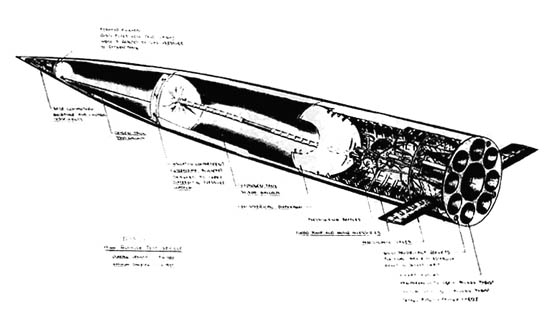 |
North American Aviation's HATV concept, late 1945 |
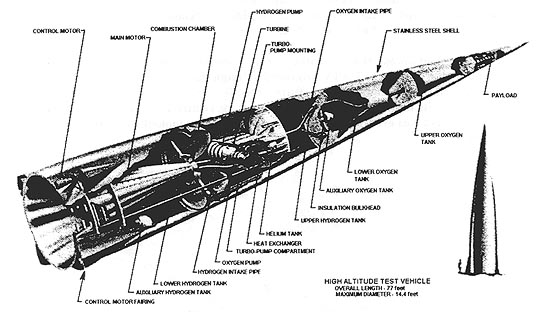 |
Martin Aircraft's competing HATV concept, designed around a rocket engine based on highly advanced liquid hydrogen technology pioneered by Theodore von Karman's Aerojet company. Both the North American and Martin designs were intended to reach orbit as a complete unit: Single Stage To Orbit (SSTO)
via Aerospace Projects Review |
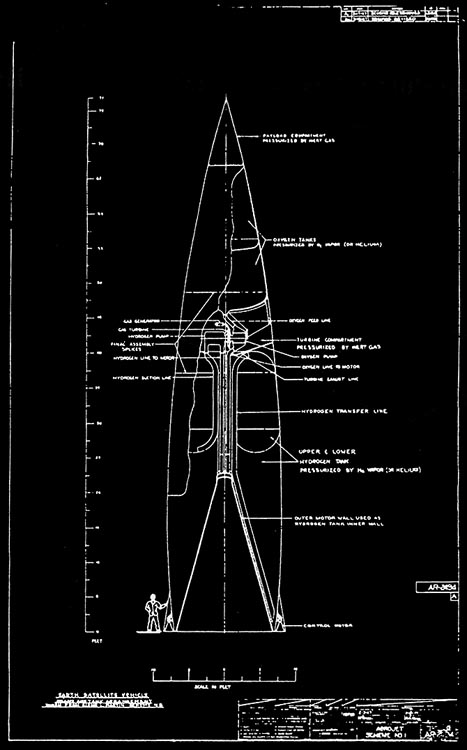 |
Cutaway diagram of Martin's HATV shows huge conical Aerojet rocket nozzle buried inside the lower liquid hydrogen fuel tank
via Aerospace Projects Review |
The Army Air Force was attracted by the satellite idea as well - General Hap Arnold noted in November 1945 that his service also considered a rocket-powered space vehicle to be a practical proposition. The following April, the Air Force's Deputy Chief of Staff for Development, Major General Curtis LeMay, asked Project RAND, then a branch of of Douglas Aircraft's Santa Monica division, to undertake a three-week engineering analysis of the technical problems of such a system. RAND's head, former test pilot Frank Collbohm, readily agreed.
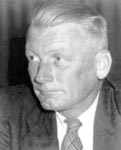 |
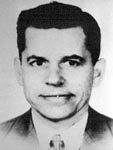 |
Frank Collbohm, far left, and James Lipp |
On May 2, 1946, James Lipp's RAND group issued Report No. SM-11827, "Preliminary Design of an Experimental World-Circling Spaceship," to date the world's most comprehensive engineering study of the detailed nuts-and-bolts realities of a satellite spacecraft.
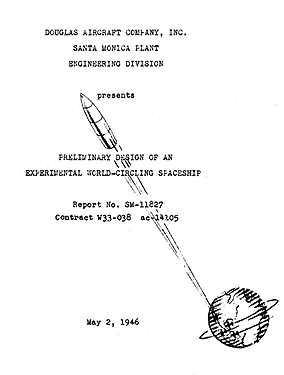 |
|
RAND's engineers took a more conservative approach than the HATV designers had, basing their rocket more closely on German V-2 technology and electing to use multiple stages to send the satellite into orbit. They also considered the problems of guidance, communication, thrust control, structural materials, fuels, and means to deal with the hostile space environment. The military applications of satellites were specifically, if briefly, addressed, especially the potential for their use for covert photographic reconnaissance of hostile territory. Significantly, the possibility of returning the upper stage safely to earth was also examined.
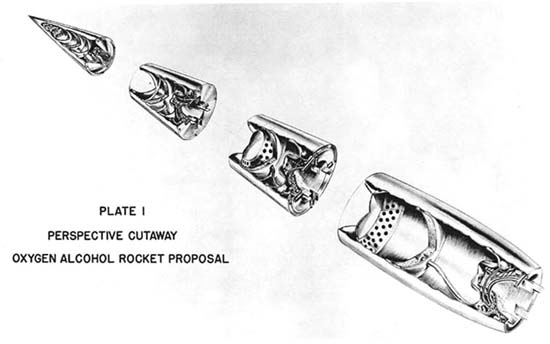 |
The basic 1946 RAND "World-Circling Spaceship" satellite laucher consisted of four stages (nicknamed "Grandma," "Mother," "Daughter" and "Baby"), each equipped with an engine and tanks for alcohol and liquid oxygen propellants. "Baby," the actual satellite, would contain the guidance equipment and scientific payload |
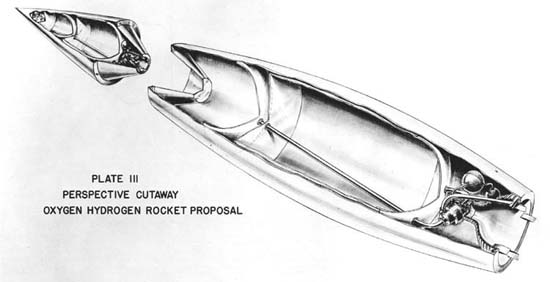 |
A more advanced version, burning high energy liquid hydrogen propellant, could reach orbit using only two stages but would require much more development. Both versions of the design still used V-2-like carbon vanes in the rocket exhaust for thrust vector control during boost. The satellite was to be controlled by gyroscopes and gas jets once in orbit
NASA |
RAND's advanced rocket engineering concepts were attractive to Project SIGN, the Air Force's UFO analysis activity at Wright Field, which by the middle of 1948 was leaning toward the idea that some "flying disc" reports might represent actual extraterrestrial spacecraft. On July 21, 1948, evidently based on the interests of Maj Gen Charles Cabell, Director of Intelligence, Air Corps [sic] Letter 80-10 requested RAND to "present information that would serve to evaluate the remote possibility that some of the observed objects may be space ships or satellite vehicles." RAND's James Lipp began to consider propulsion technology for UFOs based on extrapolations of the work done on the World-Circling Spaceship study.
See: AF RAND UFO/Space Ship Study Request
RAND would pursue work on reconnaissance satellites well into the 1950s, and as early as 1951 it conducted ground-based electronic experiments aimed at testing the feasibility of real-time video imagery downlinks from military spacecraft.